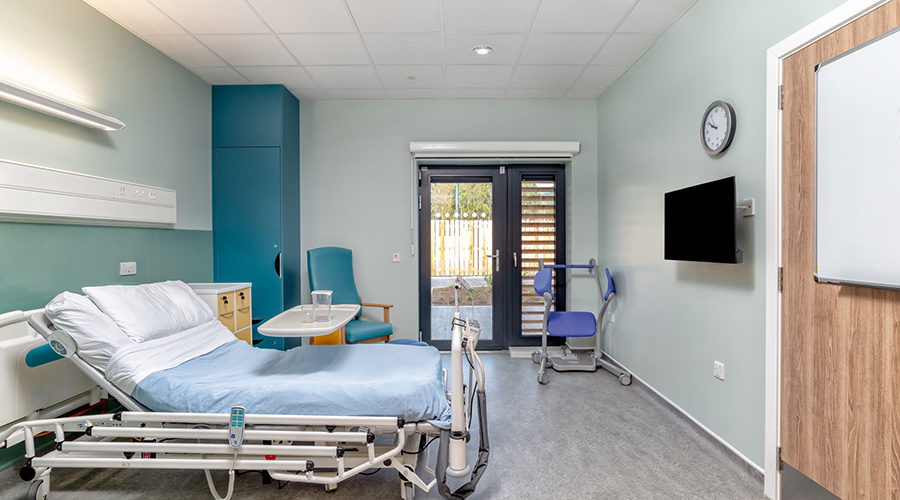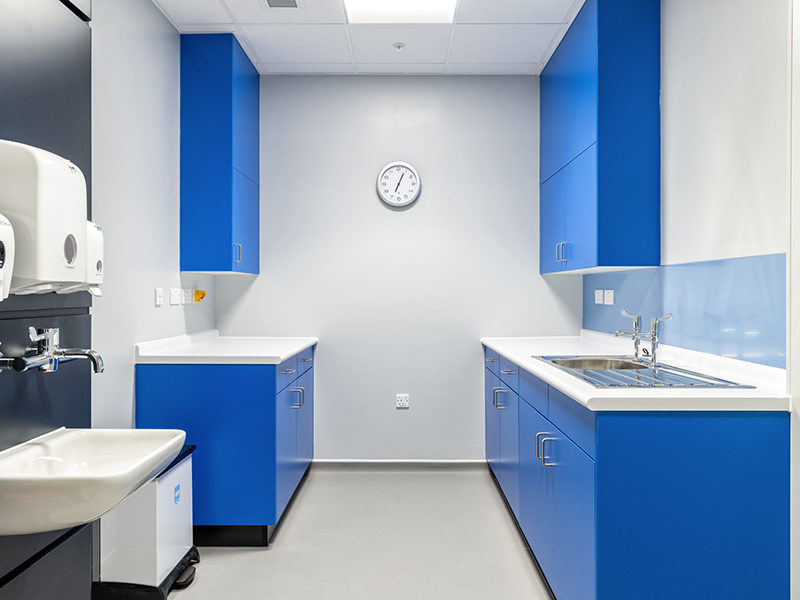In this article, Peter Waring, Director of healthcare furniture and fit-out specialist Deanestor, provides some practical advice for specifiers of hospital storage solutions.
Deanestor
There are typically four types of storage solutions for inpatient wards:
Base and wall cabinets with fixed or adjustable shelves manufactured to HTM63.
Modular hospital storage systems to HTM71 have baskets, liners and trays for organising storage of medical consumables and equipment such as syringes, dressings and catheters. This furniture can be configured from base and wall cabinets and full-height storage units to maximise storage capacity. They are designed to be interchangeable and labelled, and allow a greater degree of flexibility to store different and changing products.
Bespoke cabinetry can be manufactured to address project-specific storage requirements, such as non-standard sizes or to meet an architect’s specification, finish and layout. These can be wardrobes, bedside lockers or bedhead units for the storage of personal items in wards for acute or mental healthcare. This furniture can be designed to create a more welcoming patient environment similar to a hotel.
Drugs cabinets – these should meet the Misuse of Drugs Safe Custody regulations 1973 and fit into three categories. All are lockable and typically metal units. There are general drugs cabinets, controlled drugs cabinets, which are more secure with a two-stage locking system, and patient cabinets to allow self-administration of drugs or to store individual drug supplies.
Storage rooms can be located adjacent to inpatient wards, which contain racked timber or metal shelving systems for bedding, sheets and other larger supplies of consumables.
Key drivers for specification
The key drivers are compliance with the relevant HTMs and manufacture in the material selected by the trust or design team.
The HTMs are very prescriptive and stringent with fixed furniture typically being melamine-faced MDF with laminated doors and edgings to provide stability and impact resistance. These can be supplied in a range of colours.
How to procure bespoke hospital furniture
A UK furniture manufacturer will work to shorter lead times, which are important for replacement doors or components. A glue and dowelled construction is more robust.
The manufacturer should have a high degree of quality control and if they offer both bespoke and standard products, there is more flexibility to maximise storage space – for example, by manufacturing non-standard cabinet sizes where needed.
The supplier should have a clear understanding of the relevant HTMs – both how to meet these NHS requirements and where you can be more flexible. A good manufacturer will be able to provide guidance and advice.
Logistics and planning are also important. We work to a just-in-time model to avoid having to store large amounts of furniture on a hospital site – whether a new-build site or in a live hospital environment. This requires careful logistics planning and project management.
Experienced project managers and fitters who have worked on live hospital projects will also add value to any refurbishment or ward upgrading projects and minimise disruption to patient care.
A look to the future
There has been little change to HTM principles in the last 30 years. However, demand for more modular furniture continues to increase. These storage solutions are much more flexible and can easily be changed to meet new uses or equipment.
Over the last five years, we have seen an increase in individual patient rooms rather than multi-bay wards, and more of a hotel feel for the patient experience. This means bespoke storage solutions in wood grain finishes are often specified, which are much less clinical.











